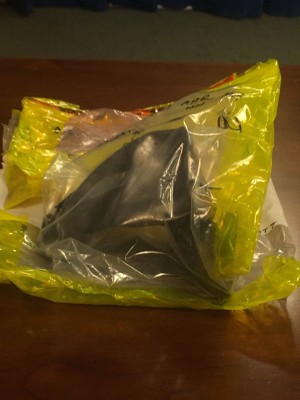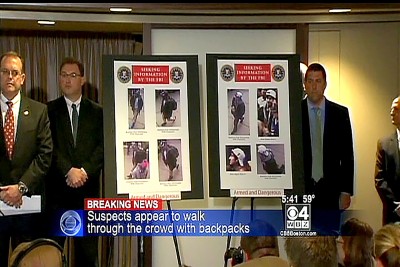
In the fifth day of the trial of Boston Marathon bombing suspect Dzhokhar Tsarnaev, the jury saw a shift in testimony. While the trial’s first four days focused on the Boston Marathon bombings that occurred on April 15, 2013, Wednesday’s testimony largely highlighted the murder of Massachusetts Institute of Technology police officer Sean Collier, which occurred three days later.
Dzhokhar, 21, and his older deceased brother Tamerlan are accused of planting two explosive devices near the finish line of the Boston Marathon on Boylston Street just under two years ago, killing three bystanders and injuring more than 260.
In total, Dzhokhar is charged with 30 federal counts, including offenses relating to the death of Collier on April 18, 2013. Tsarnaev pleaded not guilty to all 30 charges in July 2013, The Daily Free Press reported.
After listening to testimony provided by three FBI officials, jurors listened to accounts from MIT and Cambridge police officers and officials, an MIT graduate student and an MIT video surveillance supervisor — each of whom painted a picture of Collier’s final moments.
Collier, who joined the MIT Police Department in January 2012, arrived on the university’s campus for a 3 p.m. to 11 p.m. shift on Thursday, April 18, 2013.
MIT Police Chief John DiFava, who left the MIT campus at approximately 9:35 p.m. that night, told the jury he drove up to Collier’s marked MIT cruiser and chatted with the 26-year-old patrolman for around three to four minutes.
“I told him to be safe, and I left,” DiFava said.
“Did you ever see Sean Collier alive again after that?” asked federal prosecutor William Weinreb.
“I did not,” DiFava answered.
At approximately 10:20 p.m. that night, MIT Police Sgt. Clarence Henniger saw Collier’s police cruiser parked near the intersection of Main Street and Vassar Street, sandwiched between the David H. Koch Institute for Integrative Cancer Research and the Ray and Maria Stata Center, he said.
Just a few minutes later, MIT police officer David Sacco, who was working dispatch, received a phone call complaining of what sounded like someone banging together a trash can in Collier’s sector area, he said.
[soundcloud url=”https://api.soundcloud.com/tracks/195462967″ params=”auto_play=false&hide_related=false&show_comments=true&show_user=true&show_reposts=false&visual=true” width=”100%” height=”450″ iframe=”true” /]
Sacco dispatched Collier to investigate the noise, but did not hear from him after numerous attempts to reach him via police radio and cell phone.
Henniger, who said he helped train and mentor Collier during his time on the unit, was the first to arrive on the scene. Collier’s car was in the same place Henniger had seen it less than 10 minutes earlier.
“I parked about eight to 10 meters away from Officer Collier’s car,” Henniger said. “When I arrived at the cruiser, I looked inside, and that’s when I discovered that Officer Collier had been shot … I observed a wound to the head, the temple. I observed a wound to the neck, and I observed a wound to his hand.”
Henniger’s call on the police radio, after finding Collier, was later played in front of the jury.
[soundcloud url=”https://api.soundcloud.com/tracks/195462625″ params=”auto_play=false&hide_related=false&show_comments=true&show_user=true&show_reposts=false&visual=true” width=”100%” height=”450″ iframe=”true” /]
“Oh my goodness … Officer down! Officer down!” Henniger shouted, as can be heard on the recording of the call.
Within 45 seconds, another officer arrived at the scene and helped Henniger pull Collier out of his vehicle. Henniger said it was tough to get a grip on Collier, who was covered in blood.
At first, Henniger believed Collier’s service weapon — a Smith and Wesson .45 semi-automatic pistol — was missing, but he said he simply could not find it initially due to the amount of blood on the fatally wounded officer.
Cambridge Police Detective Brendan O’Hearn said he responded to the “officer down” report on the radio and began performing chest compressions on Collier.
“His face and his neck were covered in blood,” O’Hearn said. “He had some type of a wound to his head. There was blood coming from his mouth. Sounded almost like a gurgling from his mouth.”
Collier was taken by ambulance to Massachusetts General Hospital, where he was pronounced dead.
A video feed from a rooftop camera atop MIT’s Green Building captured several of the moments leading up to Collier’s death and was shown to the jury.
At around 10:23 p.m., two individuals were spotted walking along MIT’s “North Court” plaza from the Ames/Main Street entrance and approached Collier’s vehicle from behind, said MIT video surveillance manager Matthew Isgur.
The two suspects made their way up to the driver-side window of Collier’s cruiser, with the surveillance video chronicling what appeared to be three or four quick flashes before the car’s break lights suddenly beam.
At 10:26 p.m., both individuals fled the scene, and Isgur said the university has a video feed of a car speeding away from Ames Street just after 10:26 p.m.
The prosecutors then called MIT graduate student Nathan Harman to the stand, who said he biked past Collier and one of the individuals linked to the officer’s death at approximately 10:24 p.m.
“There was a parked police cruiser … When I went by, the front door was open, and there was someone leaning into the driver-side door,” Harman said.
As Harman glided within “five or six feet” of Collier and the figure, the third-year mathematics student said he startled the individual motioning into the vehicle, but he paid little attention to the quick encounter.
When asked by prosecutors if he recognized that same figure in the courtroom on Wednesday, Harman pointed to Tsarnaev.
“He’s right there. He has a blue shirt on,” Harman said.
Earlier Wednesday morning, prosecutors continued the testimony of FBI Special Agent Sarah De Lair from Tuesday’s session, as well as statements from two other members of the bureau.
De Lair examined numerous pieces of evidence collected on Boylston Street in the immediate aftermath of the bombing, including a tattered backpack, remains of a pressure cooker unit and wiring that was used as a “fusing system” for a bomb.

De Lair’s final piece of documentation — Exhibit 186 — was a collection of shrapnel collected at the scene. According to De Lair, the projectiles stored within the bomb consisted of shards of metal, a zipper, small nails, duct tape, BBs and other pieces of debris.
Defense attorney Judy Clarke later cross-examined De Lair, focusing on the forensic research conducted on the frayed backpack collected on Boylston Street. Clarke asked if the material found inside the backpack was submitted for fingerprint analysis, but De Lair said she did not know for sure if the contents located inside the backpack were indeed studied.
Follow De Lair’s testimony, the prosecution turned to FBI Agent Chad Fitzgerald, an 18-year veteran of the bureau that specializes in the analysis of cellular data.
By utilizing cellular information, cell-service towers and call detail records, Fitzgerald and the FBI charted out the general vicinity of Dzhokhar and Tamerlan’s location during the week of the bombings.
Calls made and received by phones registered to both Tsaranev brothers pinged off cell towers in the area around Boylston Street between 2:49 p.m. and 2:51 p.m. on the day of the bombings, Fitzgerald said.
On April 17, Dzhokhar’s phone was received off a cell tower in the New Bedford/Dartmouth area, while a pre-paid “burner phone” registered to “Jahar Tsarni” registered with a tower in Cambridge on April 18.
The defense later questioned Fitzgerald, noting that the call duration listings received by cell towers were much longer than the data extracted from the phones themselves.
After hearing Fitzgerald’s testimony, prosecutors capped their FBI testimony for the day with statements from web manager James Eppard from the FBI’s Office of Public Affairs.
Eppard, a former news editor at AOL, is often tasked with managing and uploading content to its websites, including “outreach material” such as videos, photos and wanted posters to aid in investigations, he said.

On April 18, a press conference was held to both brief reporters on the status of the case and reveal photographs and video of the suspects in the attacks. Eppard, in coordination with the press conference, uploaded images and surveillance video of the suspects to the FBI website to help spur the public to provide tips and information regarding the investigation.
Surveillance clips of the suspects were then posted on the FBI’s YouTube channel and embedded on the bureau’s website, generating 12 million page views in 24 hours, exceeding the 10 million clicks that the website usually compiles in a month.
“Traffic to the FBI site was unprecedented on that day,” Eppard said.



















































































































